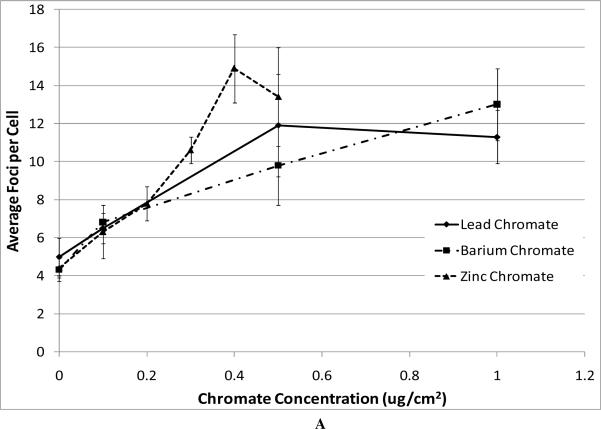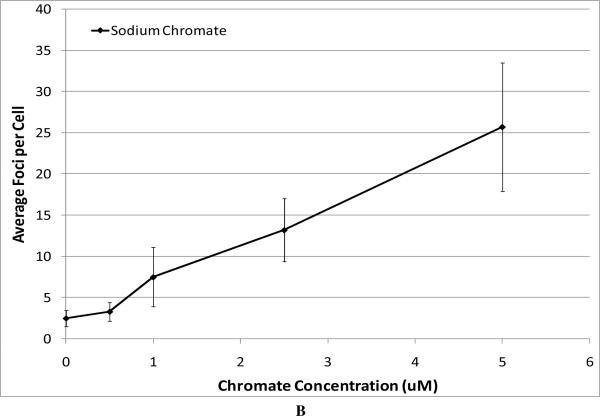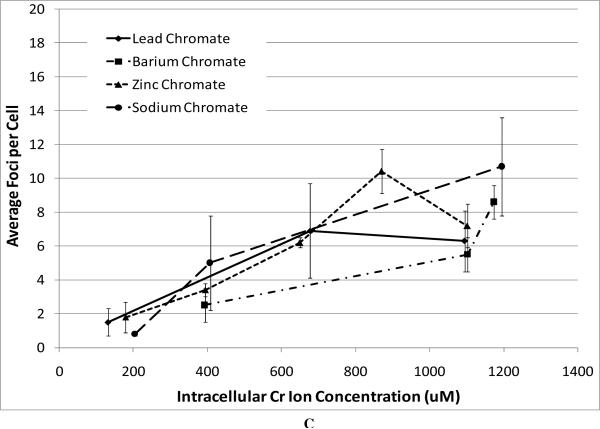Figure 3. Genotoxicity of Four Cr(VI) Compounds.
This figure shows the induction of DNA double strand breaks measured by gama-H2A.X foci formation. All of the particulate compounds induced a concentration-dependent increase in the average number of foci per cell. Data represent an average of three experiments ± SEM for all four compounds. Panel A shows that exposure to lead chromate, barium chromate and zinc chromate induced concentration-dependent increases in DNA double strand breaks. Lead chromate was statistically different from control at 1 ug/cm2 (p < 0.05); barium chromate was statistically different from control at 0.1 and 1 ug/cm2 (p < 0.05); zinc chromate was statistically different from control at 0.2, 0.3 and 0.4 ug/cm2 (p < 0.05). Panel B shows that exposure to sodium chromate induced concentration-dependent increases in DNA double strand breaks. Administered concentrations of 0, 0.5, 1, 2.5 and 5 uM sodium chromate induced an average of 2.5, 3.3, 7.5, 13.2 and 25.7 foci per cell, respectively. Panel C shows that all compounds induced similar levels of DNA double strand breaks at similar intracellular concentrations, for example 500 uM intracellular Cr induced 3, 4, 5 and 6 average foci per cell after exposure to barium chromate, zinc chromate, lead chromate and sodium chromate respectively.



